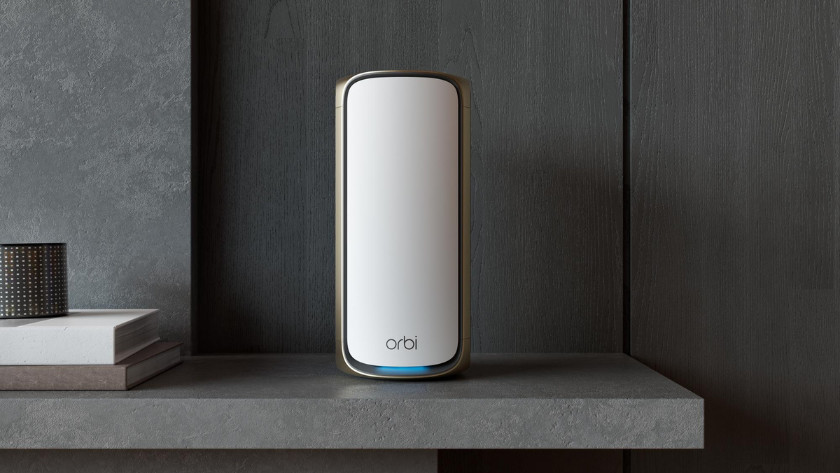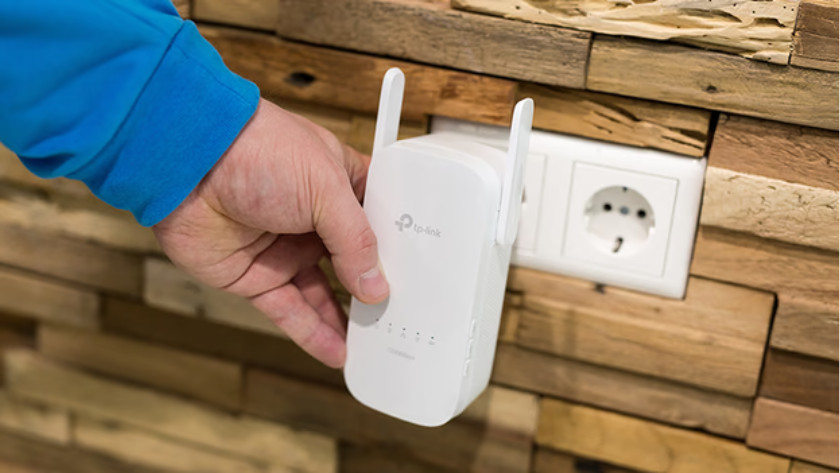
The difference between mesh WiFi routers and powerline adapters
Compare mesh stations and powerline adapters
| Mesh routers | Powerline adapters | |
|---|---|---|
| Range | No longer places without a signal | You only need a signal near your sockets and router |
| What do you need? | You only need enough stations | You need powerline adapters and a fast electric circuit |
| Internet speed | Speed only depends on your data plan | Speed depends on your data plan and power grid |
| Maximum speed | Up to 11,500Mbps | Up to 1800Mbps |
How far can they extend your network?

Mesh routers: 1 network of connected stations
Mesh stations transfer WiFi to each other wirelessly. The internet next to every mesh station is just as stable as next to your router. Depending on the model, you can connect 11 to 100 mesh stations to each other. You need 3 or 4 stations for an average townhouse. This means that mesh stations are suitable for any type of houe.

Powerline adapters: more networks via your socket
You plug powerline adapters into a socket. They'll first receive the signal directly from your router. After that, they extend the range via the power grid. So you'll have a signal in every spot with a connected adapter. The sockets do have to be connected to the same electric circuit. So you won't have a signal everywhere with powerline adapters.
How much delay occurs?

Mesh routers: no or little delay
Mesh stations create 1 network. This means that you won't notice any delays when you walk through the house. The signal runs via the stations, so the signal could be slower. Some mesh routers use backhaul, so you won't notice any delays at all. Backhaul is an extra frequency that connects mesh stations.

Powerline adapters: delay due to electric circuit
With powerline adapters, your connection is as fast as the power grid. If you receive power via an older power grid, your internet via a powerline adapter will be slower. You don't lose speed due to a large distance between your adapters. Powerline adapters create multiple networks, so your connection slows down when you walk through the house on your phone.
What do you need?

Mesh routers: only a good data plan
For mesh routers, all you need is a fast data plan. In addition, you need a mesh router on every floor of the house. If a wireless signal of your mesh router has to go through the floor, you'll notice delays. With a router on every floor, you won't notice this. This means that you need multiple mesh stations for the perfect range.

Powerline adapters: a data plan and large electric circuit
In addition to adapters and a fast data plan, you need a powerline network and an electric circuit. The sockets have to be connected to the same electric circuit. That's because the signal transmits to the other adapters via the cables in your electric circuit. The speed of your adapters depends on your data plan and the condition of the power grid
What's the maximum speed?

Mesh routers: 11,500Mbps
Mesh routers have a maximum speed of 11,500Mbps. So if you have fiber optics or a fast cable plan, you need mesh routers. Mesh routers often reach the promised speed. They use multiple channels to do this, and often have a large range. You can also connect less devices to each separate station, which makes the speed more stable.

Powerline adapters 1800Mbps
The maximum speed of powerline adapters is 1800Mbps. Do you use a new power grid? The speed of an adapter is enough for DLS connections and most cable plans. It's not very common for it to actually reach this maximum speed. Powerline adapters never get everything out of a fiber optic connection.
Conclusion
Mesh stations ensure the most complete range. So there won't be any places in the house with a weaker signal. You do need a mesh station on every floor for this. With a powerline adapter, you create a new network in a spot of a socket that's part of the same electric circuit. You'll have a slower internet speed as a result. And you'll only have a strong signal around your adapters.


